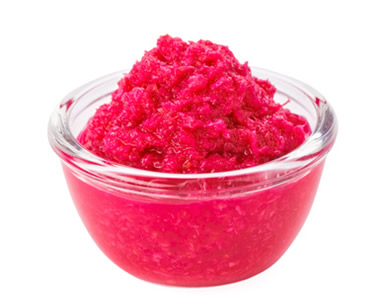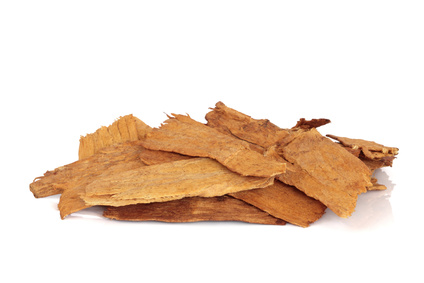Royal jelly is secreted by the hypopharyngeal gland bees, to feed young larvae and the adult queen bee. (Is secreted from the pharyngeal glands of worker bees between their sixth and twelfth days of life). It is produced in high amounts of in specially constructed cells, which develop into queen bee cells. The queen bee grows 42 % larger than the worker bee, lives 5 to 7 years and lays over 2000 eggs per day. Eating habits mean they become approximately twice the size and more than double the weight of other female bees, despite having no genetic advantage. Worker bees eating honey live only 4 to 6 weeks.
Composition
Royal jelly, consists of 60 to 70 % water, 10 to 20 % sugar and carbohydrates, 10 to 15 % protein, 3 to 6 % fats and trace amounts of minerals and vitamins. Its composition varies depending on climate and geography.
Royal jelly is known for containing all the major nutrients that a human needs. Royal jelly is rich in vitamins B-1, B-2, B-6, C, E, folic acid, pantothenic acid, inositol, biotin, niacin and 12 essential minerals magnesium, potassium, calcium, zinc. Is a very rich source of proteins and contains eight essential amino acids, sugars, important fatty acids, sterols and phosphorous compounds as well as acetylcholine. Acetylcholine is needed to transmit nerve messages from cell to cell. This neurochemical is also important for the prevention of certain degenerative diseases such as dementia and Alzheimer’s disease. Besides vitamins, mineral, and amino acid, Royal jelly is rich in nucleic acids, DNA and RNA. Also, this special jelly contains 10-hydroxydecanoic acid which gives the sour taste and can inhibit bacterial growth. Royal jelly contains a substance of unknown which is four percent by weight, and Royal jelly`s structure is so unique that it cannot be replicated in any laboratory.
Royal Jelly Health Benefits
Royal jelly has been studied for a variety of actions, including antitumor, antibiotic and regulating the immune system. Also, is known for its calming effect on depressed, manic or nevrotic people. Royal jelly acts as a catalyst, stimulation intracellular metabolic activities without significantly modifying normal physiological activity.
10-Hydroxy-2-Decenoic Acid (10-HDA)
10-Hydroxy-2-Decenoic Acid (10-HDA) is a substance that young bees produce in their mandibular glands. Is known as an important active ingredient to fight viruses, bacteria and fungus. 10-Hydroxy-2-Decenoic Acid (10-HDA) makes up half of Royal Jelly fatty acid content and is an important criterion for the product’s potency and quality. 10-Hydroxy-2-Decenoic Acid comprises 2-15% of total weight of whole royal jelly.
Acetylcholine
Royal Jelly contains acetylcholine. Acetylcholine is needed to transmit nerve messages from cell to cell. Acetylcholine in the brain are associated with improved memory, fluidity of thought, and enhanced cognitive function. This neurochemical is also important for the prevention of certain degenerative diseases such as dementia and Alzheimer’s disease.
Anti Aging
 Royal Jelly helps in regeneration of cells, repairs damaged tissues and rejuvenates the cells for function. Dr. H.W Schmidt, a researcher for the German Medical Association, said that royal jelly was the most prominent valuable, rejuvenatory substance for reviving the body. Dr. Schimdt found that elderly patients with hardening of the arteries improved as a result of royal jelly treatments. Dr. Saenz of the Pasteur Institute explained the fact that royal jelly is the riches source of a potent anti aging factor. Animal-based study, mice that were given royal jelly for 16 weeks lived longer and had stronger bones. Also, when royal jelly is applied topically as a on skin damaged by the effects of radium treatment, the skin heals rapidly and symptoms reduced.
Royal Jelly helps in regeneration of cells, repairs damaged tissues and rejuvenates the cells for function. Dr. H.W Schmidt, a researcher for the German Medical Association, said that royal jelly was the most prominent valuable, rejuvenatory substance for reviving the body. Dr. Schimdt found that elderly patients with hardening of the arteries improved as a result of royal jelly treatments. Dr. Saenz of the Pasteur Institute explained the fact that royal jelly is the riches source of a potent anti aging factor. Animal-based study, mice that were given royal jelly for 16 weeks lived longer and had stronger bones. Also, when royal jelly is applied topically as a on skin damaged by the effects of radium treatment, the skin heals rapidly and symptoms reduced.
Hormones
In 1939, Harvard scientists published an article in the journal Science stating that Royal Jelly contains gonadotropic hormones. In 1984 , researchers at New York Medical College said that had found testosterone in Royal Jelly. According to a study published the in 2009, outlined clinical evidence demonstrating that royal jelly usage in rats increases sperm count and testosterone. Royal jelly contains steroid hormones, which eliminate inflammation and swelling. The steroids controls a wide range of female functions, including temperature control, ovulation, menstruation, sexual arousal. Some research have shown that Royal Jelly has the propensity to mimic estrogen, which can help those that suffer from low estrogen levels.
Antibiotic
In vitro studies have confirmed that 10-HDA in royal jelly has antibiotic activity. A study done in 1995 revealed that royal jelly was capable of killing several kinds of bacteria, including E. coli. Dr. Murray Blum, of Louisiana State University discovered that Royal Jelly contains an antibiotic approximately one-quarter as active as penicillin.
Diabetes
Royal jelly prevents diabetes from occurring the person body by increasing the production of insulin in the body. Researchers found that royal jelly contains insulin-like peptides, the molecular weight and bovine insulin the similar impact in the treatment of diabetes. Some research, show that royal jelly regenerates pancreas cells, especially the cells of Langerhans’ islets, the damage of which leads to diabetes.
Immune System
Research documents that royal jelly contains a number of active ingredient which strengthen immunity. Royal Jelly contains gamma globulin, which helps your immune system fight infections. Globulin is very important for Supporting the immune system. French and German researchers have shown that the 10-Hydroxy-2-Decenoic Acid in royal jelly gets into white blood cells and stimulates them to kill viruses, including the viruses that cause hepatitis and herpes virus. In a study published in Alternative Medicine Review in 2010, researchers discovered royal jelly stimulated white blood cell product and had antibacterial properties.
Tumor Cells
Research suggests that the 10-HDA found in royal jelly may inhibit the vascularization of tumors. 10-HDA improved the ability of white blood cells to destroy tumor cells. Royal Jelly has been found to be a effective against the chemotherapy and radiotherapy side effects. Helps to rebuild the good cells that are destroyed by chemotherapy and helps to strengthen the immune system.
Injections
Scientists showed that when given intravenously, royal jelly significantly improved vitality, and immune system function, particularly in pathological cases. Also intravenous injections cause slight vasodilation and have a hypotensive effect. One group reported that the injection of 10-Hydroxy-2-Decenoic Acid affords complete protection against transplantable mouse leukemia. Royal jelly used in combination with cyclophosphamide an antitumour preparation, which is used for treating lung carcinoma, moderately strengthens its therapeutic effect. Cyclophosphamide combined with royal jelly has a better therapeutic effect.
Graves Disease
Graves, is an autoimmune disease. In Graves disease, antibodies bind to the surface of thyroid cells and stimulate those cells to overproduce thyroid hormones. Hyperthyroidism is a disorder that occurs when the thyroid gland makes more thyroid hormone than the body needs. Royal jelly has been reported as a potential immunomodulatory factor in Graves’ disease.
Endometriosis
Endometriosis is a condition in which the tissue normally lining the womb grows on different organs outside the uterus. The causes of endometriosis disease are not fully understood. Symptoms of endometriosis may include painful and/or heavy periods, pelvic pain, pain during intercourse and low backache. Three quarters of women with endometriosis have pelvic pain or dysmenorrhea. Royal jelly by strengthening the health of the cells of the ovaries, uterus, and fallopian tubes the body is more resistant to developing such an aberrant condition.
How to Use?
Royal jelly can be freeze-dried and taken in capsule or tablet form or as aliquid. Dose; depends on several factors as the health, age, and several other criteria. The method of converting the royal jelly to powder is called lyophilization. Companies believe that royal jelly is best for use in the form of powder. Apitherapists agree that fresh royal jelly placed under the tongue is the best way of consuming. Is not recommended for persons allergic to pollen and apicultural products. Cause serious allergic reactions including asthma, swelling of the throat, and death.
 Beetroot juice contains high levels of nitrate. This is because the high content of nitrates in beetroot produce a gas called nitric oxide in the blood which widens blood vessels and lowers blood pressure.
Beetroot juice contains high levels of nitrate. This is because the high content of nitrates in beetroot produce a gas called nitric oxide in the blood which widens blood vessels and lowers blood pressure.  Researchers at The University of Texas MD Anderson Cancer Center found that astragalus extract boosted the cell-destroying ability, or cytotoxicity, of the conventional immune system drug interleukin-2 by helping cells of the immune system. Researchers from the University of Texas, Houston, have reported that cancer patients receiving Astragalus have twice the survival rate of those only receiving placebos. Improvement in quality of life was reported following use of an injectable form of astragalus with
Researchers at The University of Texas MD Anderson Cancer Center found that astragalus extract boosted the cell-destroying ability, or cytotoxicity, of the conventional immune system drug interleukin-2 by helping cells of the immune system. Researchers from the University of Texas, Houston, have reported that cancer patients receiving Astragalus have twice the survival rate of those only receiving placebos. Improvement in quality of life was reported following use of an injectable form of astragalus with  • Green Magma is also rich in chlorophyll which gives barley and many other vegetables their rich green color. Chlorophyll-rich greens have long been used in restoration of health and blood builders. The chlorophyll content of
• Green Magma is also rich in chlorophyll which gives barley and many other vegetables their rich green color. Chlorophyll-rich greens have long been used in restoration of health and blood builders. The chlorophyll content of